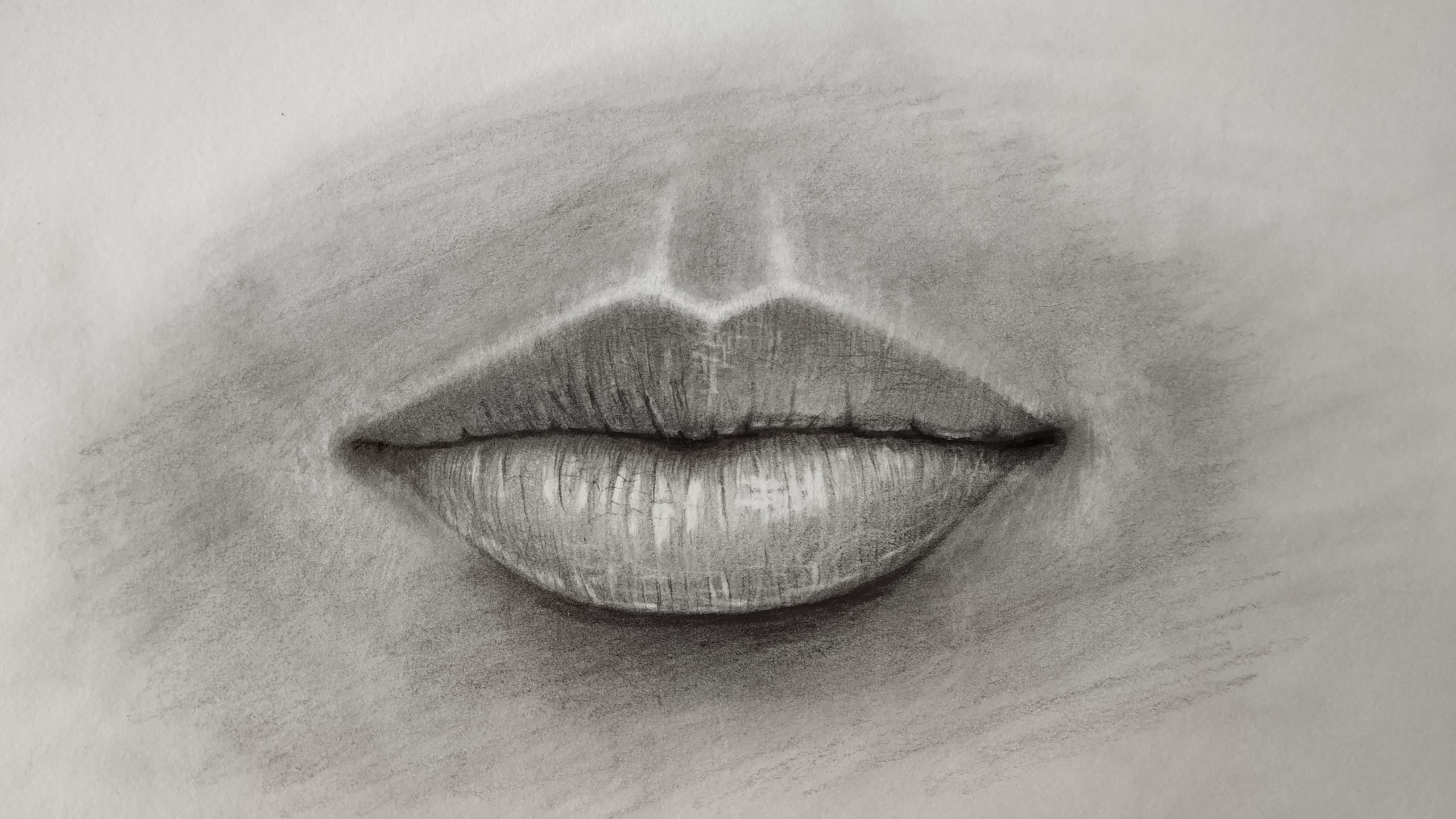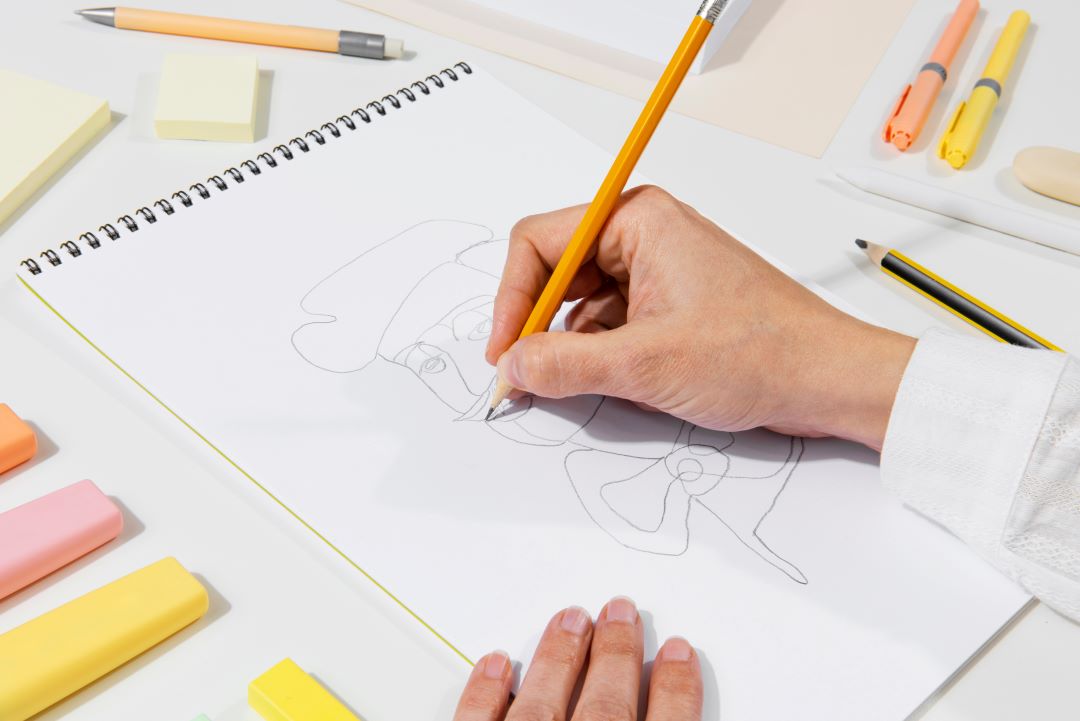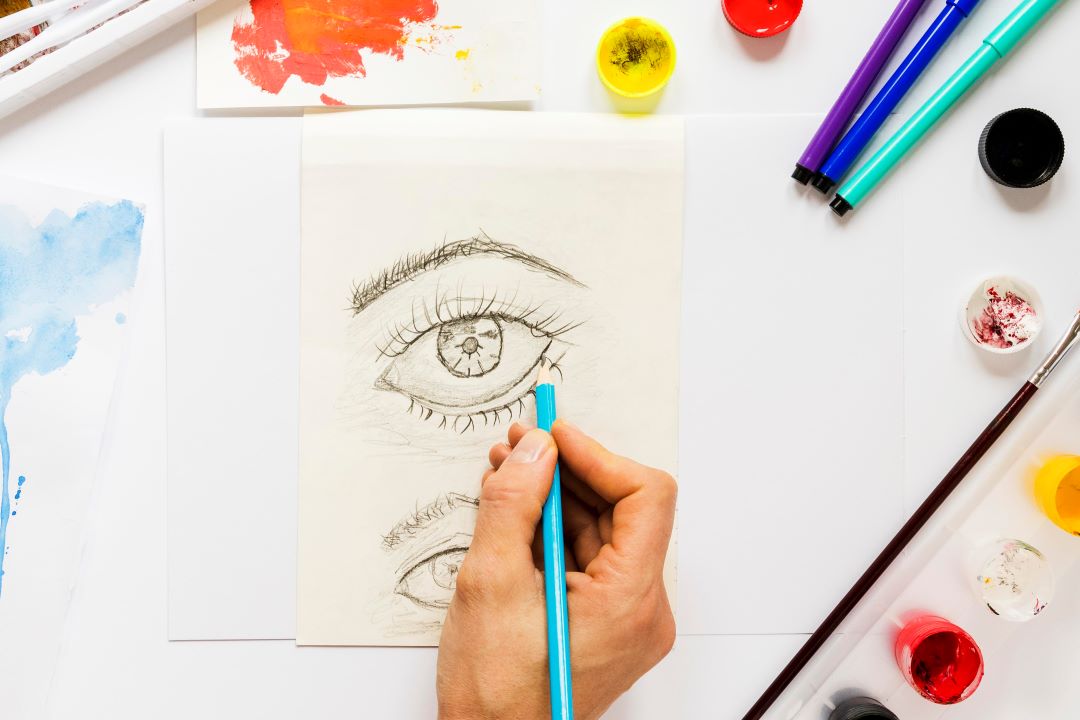How to draw hands?
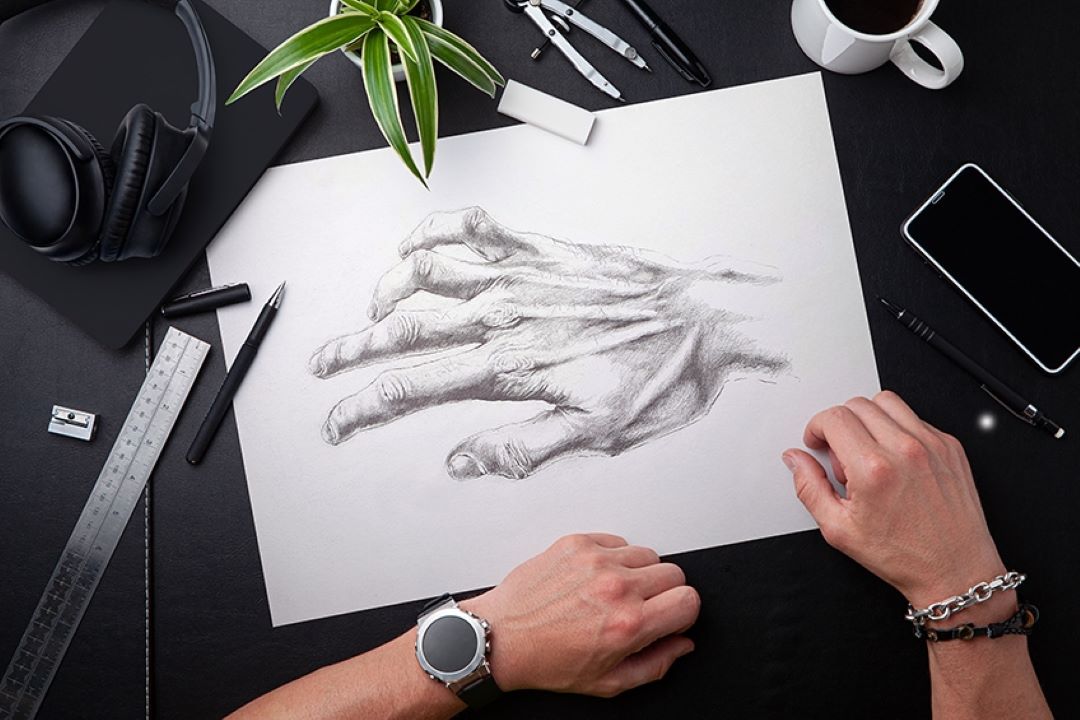
How to draw hands?
How to draw hands?
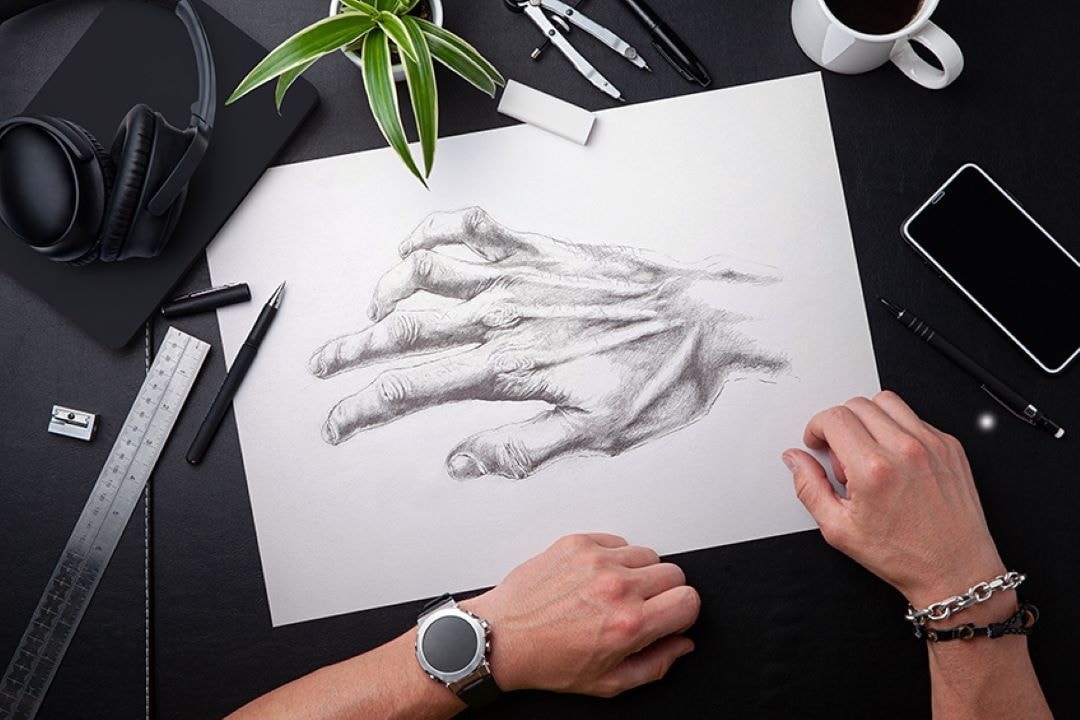
To draw hands effectively, start by observing your own hand and breaking down its complex structure into simple shapes like the triangular box for the palm and cylinders for the fingers.
Focus on putting these parts together while paying attention to perspective and the right side of the hand. It’s helpful to follow a tutorial and practice bit by bit, gradually building your skills.
We recommend practicing regularly to improve your drawing hand ability to draw various hand poses with accurate proportions and natural motion.
How to draw hands? - Step by step
To draw hands, start by observing your own hand and understanding the basic shapes and proportions, such as the palm represented by a box or triangular box and the fingers as cylinders.
Focus on the position and perspective of each finger, including the index finger, and practice putting these shapes together to create various hand poses.
Pay attention to the spread and bend of the fingers, the surface and skin details, and use lines to define the form and motion.
Hand drawing involves breaking down the complex structure into manageable parts, taking a bit of time and patience to rest and refine your work, while avoiding pain or strain.
By practicing different poses and focusing on proportions, you can develop the skill to draw hands accurately and expressively.
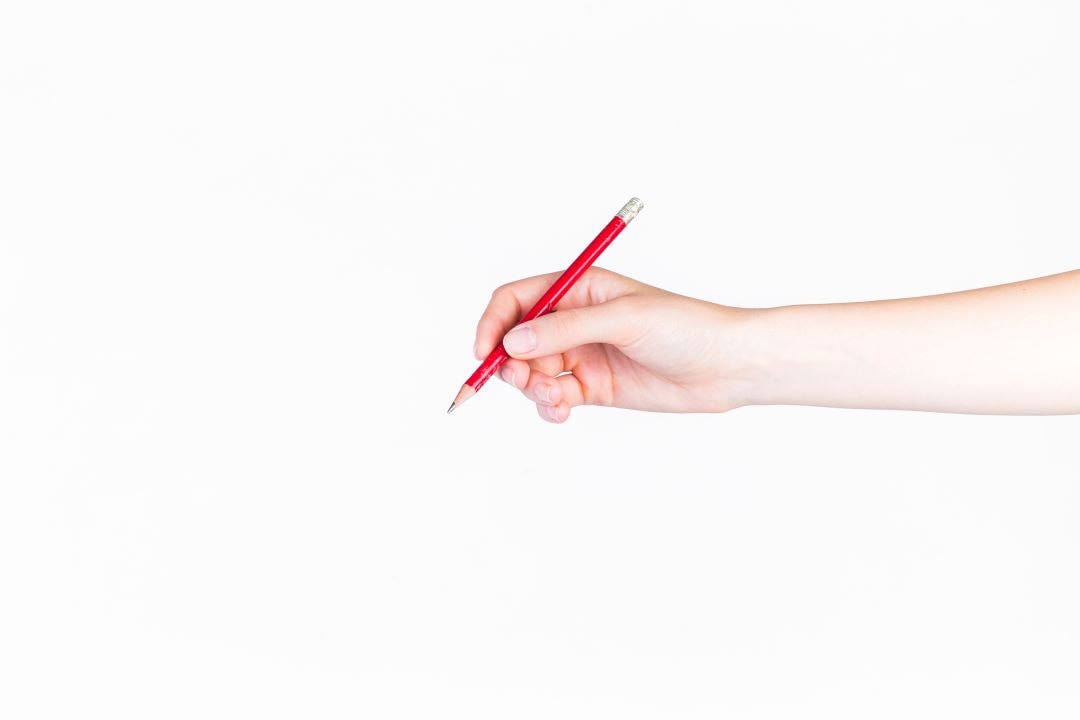
How to draw hands with pencil? Easy step by step guide for kids
To draw hands with a pencil, start by observing your own hand carefully to understand its basic shapes and movements.
Begin with simple shapes: draw a box or rectangle for the palm and use cylinders to represent each finger segment. This approach helps break down the complex structure of the hand into manageable parts, making it easier for kids to follow.
Next, lightly sketch the outline of the palm, paying attention to its size and angle. Then, add the fingers by drawing elongated cylinders connected to the palm, keeping in mind the length and bend of each finger.
Remember that the thumb is positioned differently from the other fingers, so start it from a triangular box shape attached to the side of the palm.
As you continue, mark the knuckles and joints with small circles to help guide the finger bends and proportions. Keep your pencil lines light so you can easily erase and adjust as you go.
Once the basic shapes and positions are in place, start refining the hand's outline by connecting the shapes smoothly and adding details such as fingernails, creases, and skin folds.
Encourage kids to practice drawing different hand poses by changing the angles and gestures, such as open hands, fists, or pointing fingers. Using their own hand as a hand drawing practice reference will make the process more fun and help them notice interesting details.
Finally, once the drawing looks good, kids can darken the final lines and add shading to create depth and realism. This step-by-step method makes learning how to draw hands with a pencil simple and enjoyable for kids, building their confidence and skills gradually.
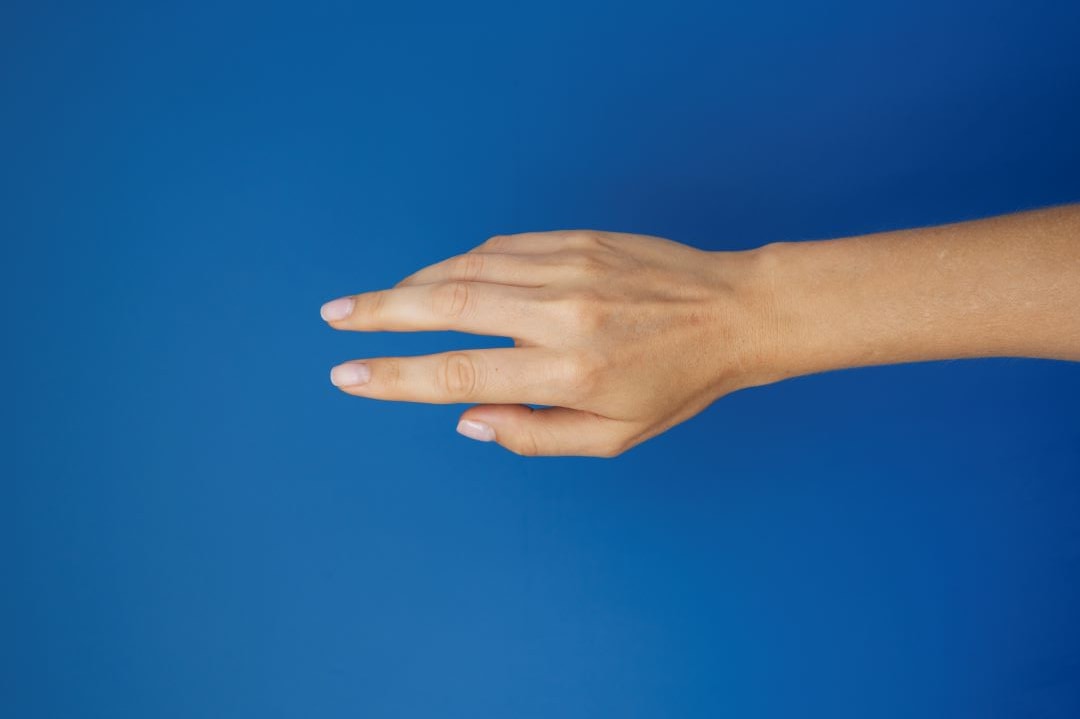
How to draw a hand with fingers?
To draw a hand with fingers realistically, start by breaking down the hand into simple shapes, such as a box for the palm and cylinders for each finger segment.
This approach helps make the complex anatomy less overwhelming and easier to manage. Begin by sketching the box to establish the overall size and perspective of the hand pose, paying close attention to the angles and proportions.
Next, add the fingers by drawing cylinders connected to the palm box, making sure the lengths and bends reflect the natural anatomy of the hand.
Observing your own hand perspective or using a reliable reference is very helpful to understand how each finger moves and how skin folds become visible in different poses.
When drawing hands, it’s important to keep in mind the perspective and foreshortening, which can change how the fingers appear depending on the angle.
Using a tutorial that demonstrates these concepts step by step can be especially beneficial for beginners.
We recommend practicing regularly by creating various hand poses and focusing on the details like knuckles, joints, and the subtle curves of the fingers.
This consistent hand drawing practice will improve your skills and confidence in hand drawing. Remember, drawing hands realistically takes time and patience, but with helpful tutorials and steady practice, you can create lifelike hand drawings that capture the complexity and beauty of this challenging subject.
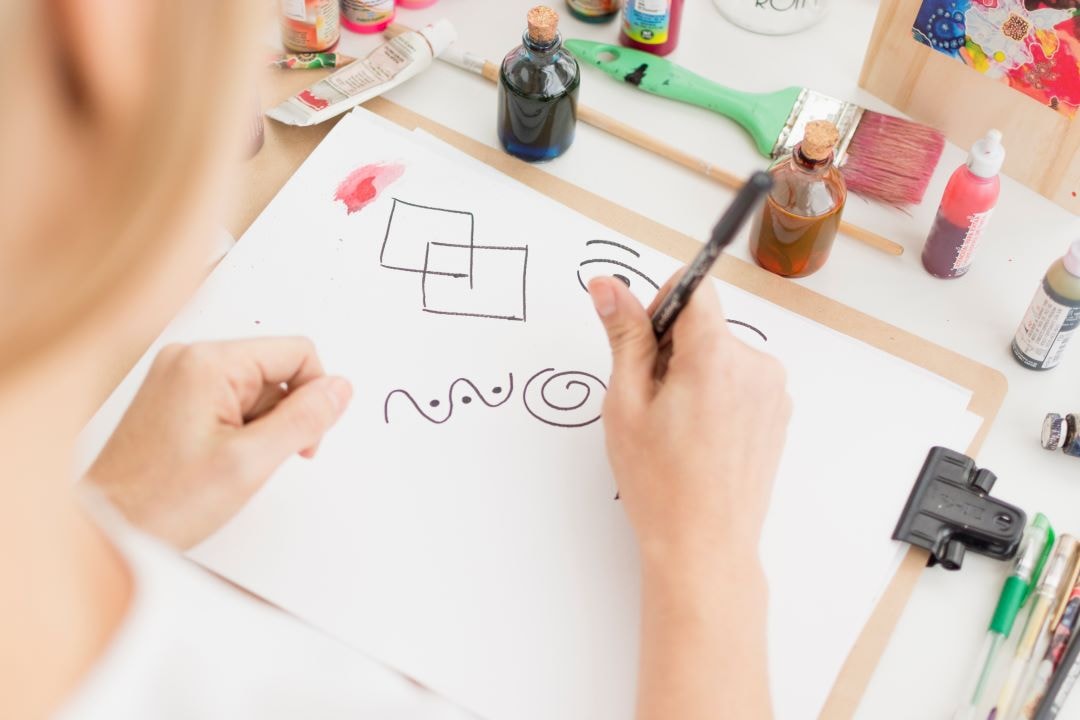
How to draw hands for beginners?
For beginners, you can draw hands by first learning about chunking, a technique that breaks down the complex structure of the hand into smaller, manageable parts.
Instead of trying to draw the entire hand at once, focus on individual sections like the palm, fingers, and thumb, which makes the process less overwhelming.
Start by visualizing the palm as a simple box or even a triangular box to grasp its shape and angle better. Putting this bit of structure in place helps you figure out the proportions and positions of each finger more accurately.
Another helpful exercise is blind contour drawing, where you draw your own hand without looking at the paper.
This practice sharpens your observation skills and helps you connect more deeply with the figure you’re trying to capture.
Using your own hand as a reference is invaluable; it provides a live tutorial full of details like the subtle bends, skin folds, and natural gestures that bring your hand drawing to life.
Finding good hand references is essential for practice. You can use photos, 3D models, or even your own hand in different poses to study the shapes and forms.
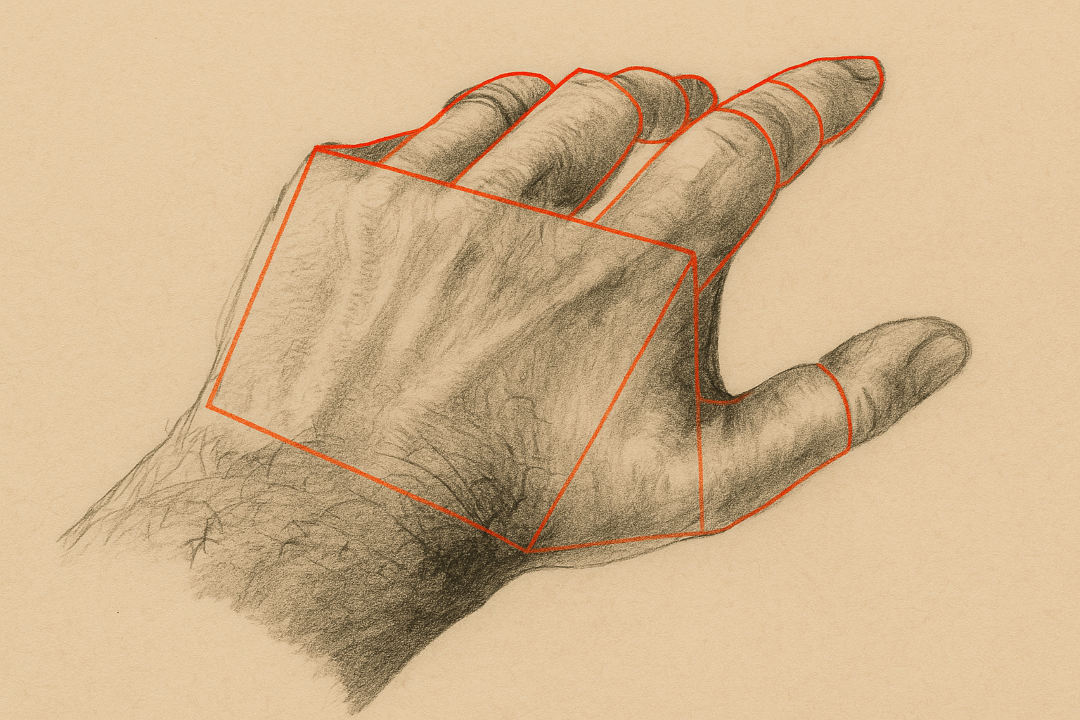
When you begin drawing hands, start by marking key points such as the knuckles, wrist, and finger joints. Sketch the palm as a box and add cylinders for each finger segment, paying attention to the angles and how the fingers bend.
When drawing hands attached to the arm and torso, add a bit of perspective to create a more realistic pose.
Mark the wrist’s position relative to the forearm and consider how the hand’s angle changes with different gestures. This step helps you understand how the hand fits into the larger figure and improves overall composition.
Troubleshooting your hands is a crucial part of improving. Check that all fingers are the appropriate length and that, when looking at the back of the hand, the distance from knuckle to wrist matches the length from knuckle to fingertip.
When viewing the palm side, ensure the palm is longer than the fingers. Also, assess whether the base of the thumb to the tip of the index finger is proportionate—not too long or too short.
You can divide a finger from the knuckle to the tip evenly in half as a quick proportion check. Finally, pay close attention to how you draw fingernails, as their shape and placement can make or break the perspective you’re aiming for.
With consistent practice, patience, and the right idea of breaking down the hand into simpler forms, drawing hands can become less daunting and even fun.
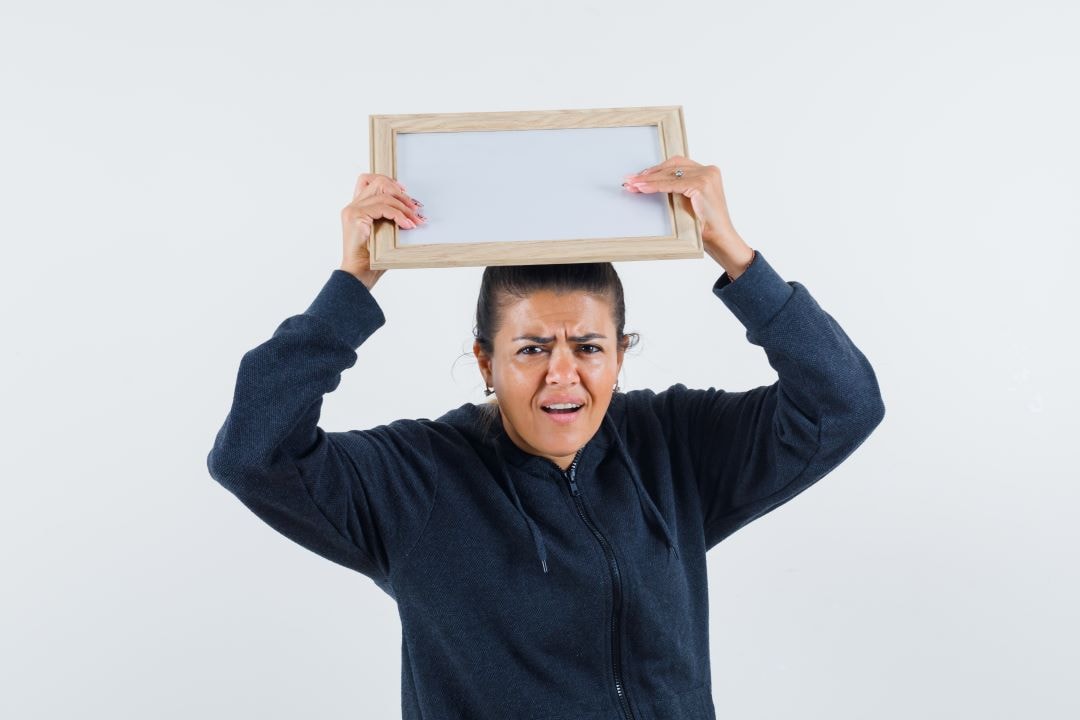
Why do artists struggle to draw hands?
Artists struggle to draw hands because they are incredibly complex and require a deep understanding of anatomy, form, and perspective.
In hand drawing, the challenge lies in capturing the numerous moving parts and the wide range of articulation that hands possess.
Each finger has varying shapes and lengths, and the palm itself is not just a flat surface but a form that can be simplified into a box or even a triangular box to better understand its structure.
Putting all these elements together can feel overwhelming at first, especially when trying to get the angle and proportions right.
The intricate details such as knuckles, tendons, and skin folds add another layer of difficulty, making it essential to study references and practice regularly.
A good tutorial can provide the idea and guidance needed to break down the hand into manageable parts, helping artists figure out how to draw hands more confidently.
Using your own hand as a reference or visualizing the hand as a combination of simple shapes like boxes and cylinders can help take the pressure off and make the process less daunting.
With a bit of patience and consistent practice, artists can develop a better head for hand drawing, learning to rest their focus on each detail while maintaining the overall figure and gesture of the hand.
The hope is that by understanding these fundamentals, the overwhelming complexity of drawing hands becomes a bit more approachable and even fun to master.
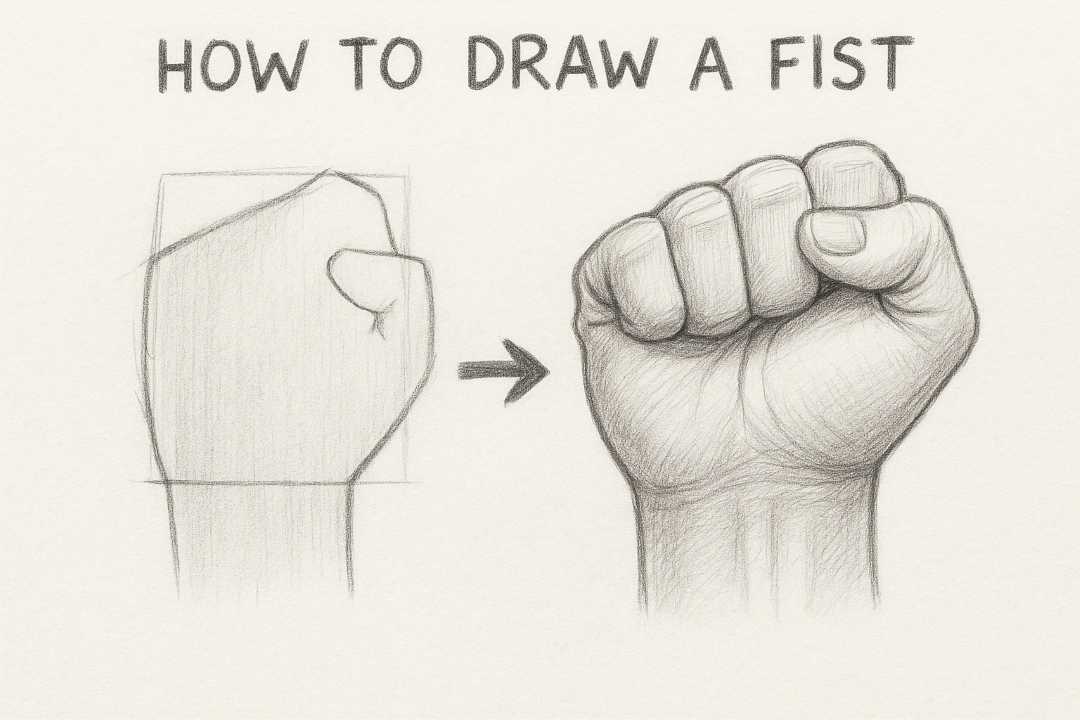
How to draw a fist easily for beginners?
To draw a fist easily for beginners, start with a square. Find the center of each side and divide each side into four equal parts.
Next, cut off the bottom right corner and the top right corner of the square. Draw a long diagonal line across the top left section and a short diagonal across the bottom left section. Once these guidelines are in place, erase them to clean up the form.
Now, draw a curved line starting at the wrist that wraps around the thumb area, adding two little bumps to suggest the thumb's position and anatomy.
Following this, sketch an "M" shape and then another "M" adjacent to it, creating the outline of the fingers folded into the fist. Add some bumps on the outside edges and extend the lines down all the way to the wrist to represent the hand's natural bend and gesture.
For the knuckles, draw four distinct "U" shapes visible on the surface of the fist. These knuckles give life and motion to your hand drawing, reflecting the force and spread of the fingers beneath the skin.
Add interior details on the palm, wrist, and fingers to capture the anatomy and proportions accurately, paying attention to the length and position of each finger, especially the index finger and thumb.
Shade the knuckles, the right side of the thumb, and the sides of the fingers to give depth and form from the correct angle and perspective.
Finally, draw the thumbnail to complete the hand pose. Using your own hand as a reference can be very helpful for understanding the subtle details and the way skin folds and bends over the bones and muscles.
This method simplifies the complex anatomy of the fist by breaking it down into manageable shapes like the box and cylinders, making hand drawing less overwhelming and more fun.
We recommend practicing this approach regularly to improve your skill and confidence in drawing hands in various poses.
With a bit of patience and observation, you’ll grasp the gesture, force, and proportions that bring your drawings to life.
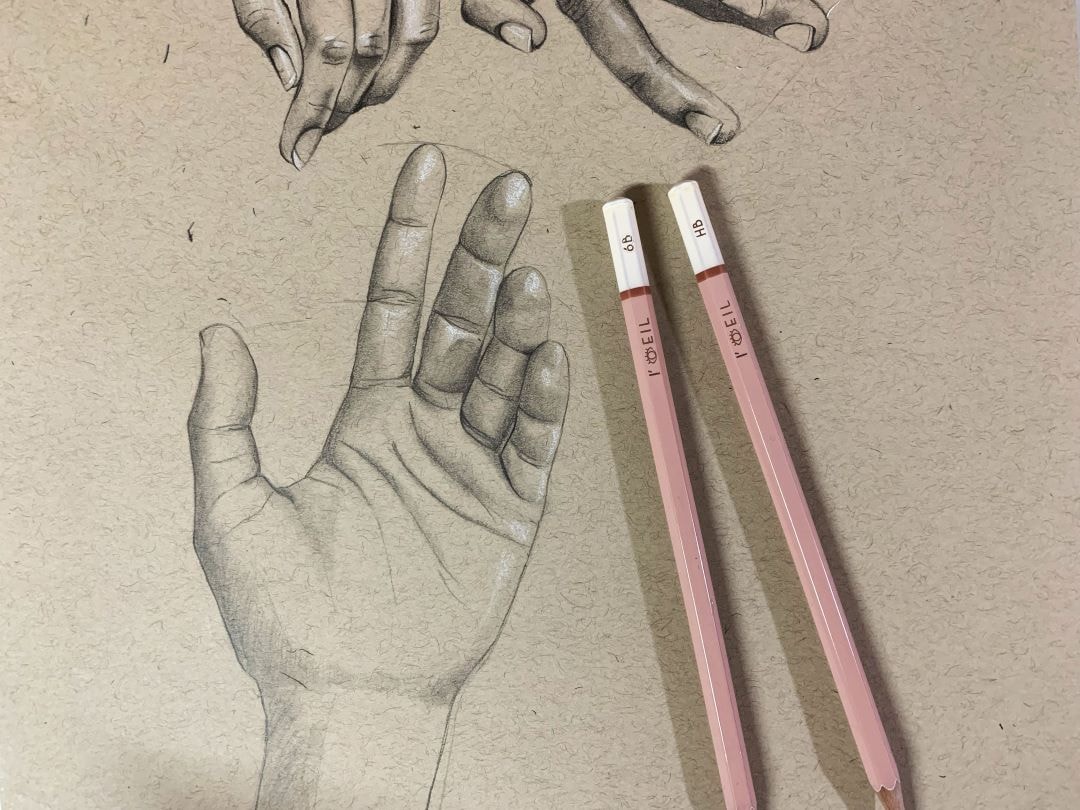
How to draw ✋?
To draw ✋ or hands, begin understanding the underlying anatomy by looking at skeletal and muscular charts to see what drives hands and fingers to move.
Notice how bones and muscles fill the surface of the hand, giving it form and life. Study the proportions, length, and position of each part, from the wrist to the knuckles, the palm, and each finger.
Visualize the hand as a series of simple shapes, such as a box for the palm and cylinders for the fingers, paying attention to the edges and bends where the hand folds or spreads.
Observing your own hand in different hand poses helps you grasp the motion and force behind each gesture.
In hand drawing, learning contour drawing techniques is essential. Start with continuous contour line drawing to capture the outline and flow of the hand, then advance to blind continuous contour line drawing, where you draw your own hand without looking at the paper.
This practice sharpens your observation skills and deepens your connection to the figure you are drawing.
Each time you practice, create drawings of hands in different poses to explore the variety of gestures and movements.
Focus on the middle points of joints, the spread of fingers, and how the skin stretches or folds. Consider practicing regularly to build confidence and improve your ability to depict hands with accurate proportions and dynamic motion.
Both hands and mouths play a key role in expressing feeling—mastering how to draw them will greatly enhance the life and personality of your characters. Learn how to draw a mouth here!

